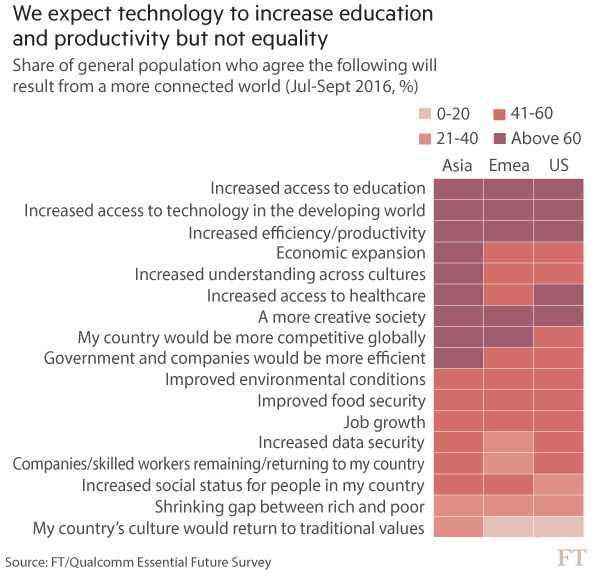Learning tailored for the iPad generation

Simply sign up to the Technology sector myFT Digest -- delivered directly to your inbox.
In past centuries, a teacher received instant feedback by asking a question and requiring pupils to hold up slates showing the answer. Any child with the wrong response could be given immediate attention to help them get back on track.
Fast forward to the 21st century and that practice is making a comeback with the rise of adaptive learning technology.
Replace the chalk and slate of the Victorian classroom with an iPad and the single answer with thousands of data points measuring each pupil response and you get a sense of how classroom practice is changing. Many schools are moving away from teachers standing in front of a class giving broad, standardised information and toward teaching in a more tailored and individualised way.
“We are still in the early stages but the tech is finally coming together,” says Jim Ptaszynski, a senior fellow at the Gates Foundation in Seattle, who studies the role of technology in education. “Adaptive learning provides an active learning scenario with lots of feedback and early research is starting to show a lot of promise.”
Adaptive learning, which is barely a few years old, remains loosely defined and has been the subject of hyperbole and overblown promises.
Broadly speaking it means using computers as interactive teaching devices. A consensus is beginning to emerge that it is more than just an explanatory video with a series of multiple choice questions.
David Levin, chief executive of McGraw Hill Education, says adaptive learning software needs not only to guide the student — allowing rapid progression through concepts they understand and more detailed work around difficult elements — but also to provide data to the teacher about how a student is performing and what needs to be done to help them.
“What we mean by adaptive learning is that you’ve taken a section of content, you’ve identified within it the individual learning objectives, you have studied those learning objectives with probes or questions,” says Mr Levin. It does not use only multiple choice responses. “We’ve actually got 17 different kinds of questions that you can ask, which feed off one another and establish . . . not only, did you know it, but how confident were you in your knowledge?”
The expansion of adaptive learning is set to accelerate. Professional services provider Deloitte’s 2016 Digital Education Survey found that three quarters of teachers questioned in US schools expect the printed textbook to completely disappear from the classroom within a decade. Ninety per cent of children in the survey said they use digital learning materials at home and two-thirds had started by the age of five.
“People are intuitively expecting the technology to get better . . . Teaching is going to be personalised down to the sentence,” says Jose Ferreira, founder and chief executive of Knewton, an adaptive learning engine used by Pearson and other education publishers.
“We are talking about the entire textbook market here — we think 100 per cent of materials will be adaptive within a decade,” he adds.
Nigel Green, vice-president of user experience at DreamBox, another adaptive learning provider, says the software can be used for any topic. However, most providers currently focus on maths, some sciences and English comprehension in classrooms and on university campuses.
Adaptive learning providers say there are benefits for both students and teachers. Knewton says that students at Arizona State University, which uses its system in developmental maths courses, saw pass rates increase by 11 percentage points while the withdrawal rate from courses halved.
McGraw Hill says the 5.5m students who have used its software have created more than 10bn data points that can be can mined to identify best practice.
“One of the main benefits of this kind of learning is that it identifies how much trouble students are in and it allows the teacher to know how solid their understanding of the subject is,” says Aoife Dempsey, general manager at Waggle, an online learning provider that uses Knewton’s software for its work in US schools.
Sceptics say the technology still faces obstacles before it can be widely adopted in the classroom.

Aisha Walker, associate professor in technology, education and learning at Leeds University in the UK, says adaptive learning creates different challenges for classroom-based teaching, particularly in schools.
“It works for some students but not always for others,” she says. “What happens when one child forgets to bring his iPad, or he brings it and it’s not charged? Or if a Windows computer starts to run updates in the middle of a lesson? It can really make life difficult for teachers.”
She adds: “It is useful and some schools are using it well but there are structural problems around the equipment and who pays for it that need to be resolved.”
For others, the potential gains outweigh the initial difficulties of setting up the system.
“It’s a very heavy lift but if you can get the institutional commitment, you can work with a provider until you get the improvement,” says Adrian Sannier, chief academic technology officer at Arizona State University.
Comments